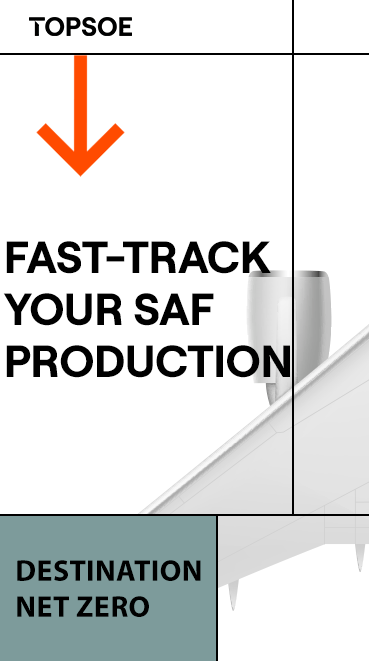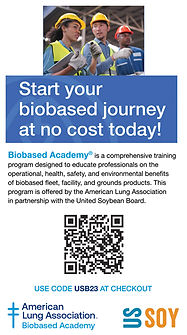Biofuels and Minerals: Meeting Market Demand

Dicalite has built out its processing and supply-chain capacity for diatomaceous earth and perlite—two filter aids critical to feedstock purification—in response to rapid growth and demand from the biobased diesel sector.
Filter aids like diatomaceous earth (DE) and perlite have become indispensable for the growing biobased diesel market. As a result, the biofuels sector has become an increasingly important growth market for filter-aid manufacturers and suppliers.
“We see large growth in this market year-over-year, and it is increasingly becoming a larger part of our business,” says Gary Smith, the central area manager for Dicalite Management Group. “We are excited to offer additional products and additional volume for this industry going forward.”
Smith explains that, while filter-aid products may have been in short supply two years ago during the massive renewable diesel boom in the U.S.—a time when the country was also facing labor shortages, supply-chain issues and logistical troubles in the wake of the COVID-19 pandemic— Dicalite has since brought on additional volumes to meet new and growing demand.
Dicalite has 17 locations that span across the U.S. and Europe, with five mines and 12 facilities that refine, process, manufacture and package its products. The company lays claim to being the most vertically integrated supplier in its industry. “Since we own and operate each location, we’re able to maintain a high level of quality control and product consistency,” the company states. “This means our customers can rely on our products to remove unwanted contaminants for cleaner fuels and a more efficient flow.”
While filter aids like DE have been used in the food and wine industries for years, they also found a home in the biobased diesel sector early on as commercialization of the methyl ester biodiesel industry took off in the mid-2000s. Back then, a vast majority of U.S. biodiesel commercial volumes was made from refined, bleached and deodorized (RBD) soybean oil. As the industry matured, more waste feedstocks were employed, and frontend filtration and the use of quality filter aids and bleaching clay became even more important. Biodiesel producers also utilize filter aids during filtration for backend fuel polishing to remove contaminants like sterol glucosides.
As renewable diesel and sustainable aviation fuel (SAF) production began to ramp up, pretreatment and the use of filter aids like DE and perlite took on a new level of importance—and consumption—for contaminant removal, particularly when lower-quality, lower-cost feedstocks are utilized. Certain contaminants like metals and other materials can foul expensive catalysts employed in the hydrotreatment and hydrocracking processes in renewable diesel and SAF manufacturing.
But it’s not just dirty feedstocks that require filtration and filter aids like DE and perlite. “We’ve seen an abundant increase in soybean crushers and refiners in the Midwest—18 plants were either recently built or expanded over the past couple of years,” Smith says. “The biofuels industry needs feedstocks like soybean oil to make biodiesel and renewable diesel. Soybean refiners need filtration as well, so that’s an important market for Dicalite. DE and perlite are used in the filtration stage, along with bleaching clay, in soybean refineries. It’s great volume for our plants, and it’s not seasonal—it’s ongoing.”
Dicalite services the wine industry too. “They use filter aids— but it’s seasonal,” Smith says. “They use a year’s volume in three months. It’s more difficult to service a seasonal market. Consistent volume every month, like biofuels or soy refining, is a market that is very good for our business.”

What Are DE, Perlite?
DE is the naturally occurring fossilized remains of diatoms— single-celled aquatic algae. Diatomite consists of billions of minute silica frameworks, making it an ideal filter media. “These large deposits are found in ancient lakebeds in the American West—the Sierra Nevada range,” Smith says. “Some deposits are 300-feet thick, nearly 100 percent pure DE fossils. Our deposit in Northern California is one of the purest deposits of DE in the world. It’s high quality and makes a great filter aid to remove particles from biofuel feedstock.” Dicalite’s DE mines are located in Burney, California, and Basalt, Nevada.
Perlite, on the other hand, is volcanic ore with water trapped inside the rock. “As a result, when you heat perlite up to 1,700-degrees Fahrenheit, it expands 20-times its size like popcorn,” Smith says. “That expanded perlite can be used as a filtration aid. Perlite is half the weight of DE per volume, so transportation typically costs less.”
Filter aids are sold by weight but filter by volume. If a plant is metering in 100 pounds of DE, then it could substitute in 50 pounds of perlite since it is half the weight.
Dicalite’s perlite mine is located in Socorro, New Mexico. Once it is mined, the perlite ore is shipped to the company’s processing facility in Crawfordsville, Indiana, where it is processed and heated up for expansion. Dicalite’s branded perlite product sells under the name Dicaperl.
Grades
Once the perlite and DE are processed, Dicalite separates different grades of material. “Those are typically ranged on permeabilities—how well water will flow through a specific size in a specific amount of time,” says Zachary Galberd, Dicalite’s southeastern sales manager. “We can create super tight filtration grades that are slow but filter very fine particles for a very clean product. We also have faster flow-rate material, which filters faster but does not remove the really small particles like the tighter filtration grades. It all depends on the customer’s needs and feedstock, that’s the route we go. We have several different recipes depending on what the feedstock is.”
Aiding Filtration
Biofuel feedstock can be filtered in many different ways, depending on the clarity required. Some common methods include settling, bag filters, cartridge filters, and leaf and filter presses utilizing DE.
These materials are called “filter aids” because they are used with various types of filters to enhance, or aid, filtration. “Our products are used in multiple types of filters—plate and frame, vertical pressure, horizontal pressure,” Smith says. “The most common ones in renewable diesel and biodiesel are vertical pressure filters, which have leaves inside. DE coats both sides and suction pulls liquid in, through and out of the filter. The process of that removes impurities.”
Using filter media is important because it prevents the cloths used in a filter press from being blinded, which happens when too many particles are collected and oil can no longer pass through. To prepare the filter press, a mixture of clean oil and DE is pumped quickly into a stack of cloth-covered plates pressed tightly together. This mixture deposits the filter media onto the cloth, creating a buildup of about 1/16 of an inch. Once the plates are coated with DE, feedstock filtration can begin. Filter media can also be added to the uncleaned feedstock before passing through the press, which increases filtration times.
Abundant Supplies
The ripple effect and the laws of supply and demand are playing out in real time in the biobased diesel sector. With respect to minerals and filter aids, it’s abundantly clear. It took the U.S. biodiesel industry 20 years to hit the 1-billion-gallon mark. Renewable diesel, however, mushroomed from a small fraction of the biobased diesel market to a multibillion-gallon market in a few short years, surpassing methyl ester biodiesel production volumes in the process. This fast growth spurred a dozen and a half new soybean crush projects alone, not to mention canola processing, partnerships between Big Oil and Big Ag, cover-crop interest and developments, other feedstock research projects, used cooking oil imports and more to “feed the beast,” as it were.
On the minerals side, as Smith says, just two short years ago filter-aid manufacturers and suppliers like Dicalite had a tough time meeting demand. That sent a signal to grow—and Dicalite did just that.
“We are seeking new business,” Smith says candidly. “Even though we’ve already greatly expanded production to meet demand, we continue to make improvements in the amount of filter-aid products we can manufacture. We have high-quality products and consistent, year-round availability, excellent customer service, strong technical support—and we’re easy to do business with.”

Author: Ron Kotrba
Editor, Biobased Diesel™
218-745-8347






















-RKstandin.jpg)
_gif.gif)




